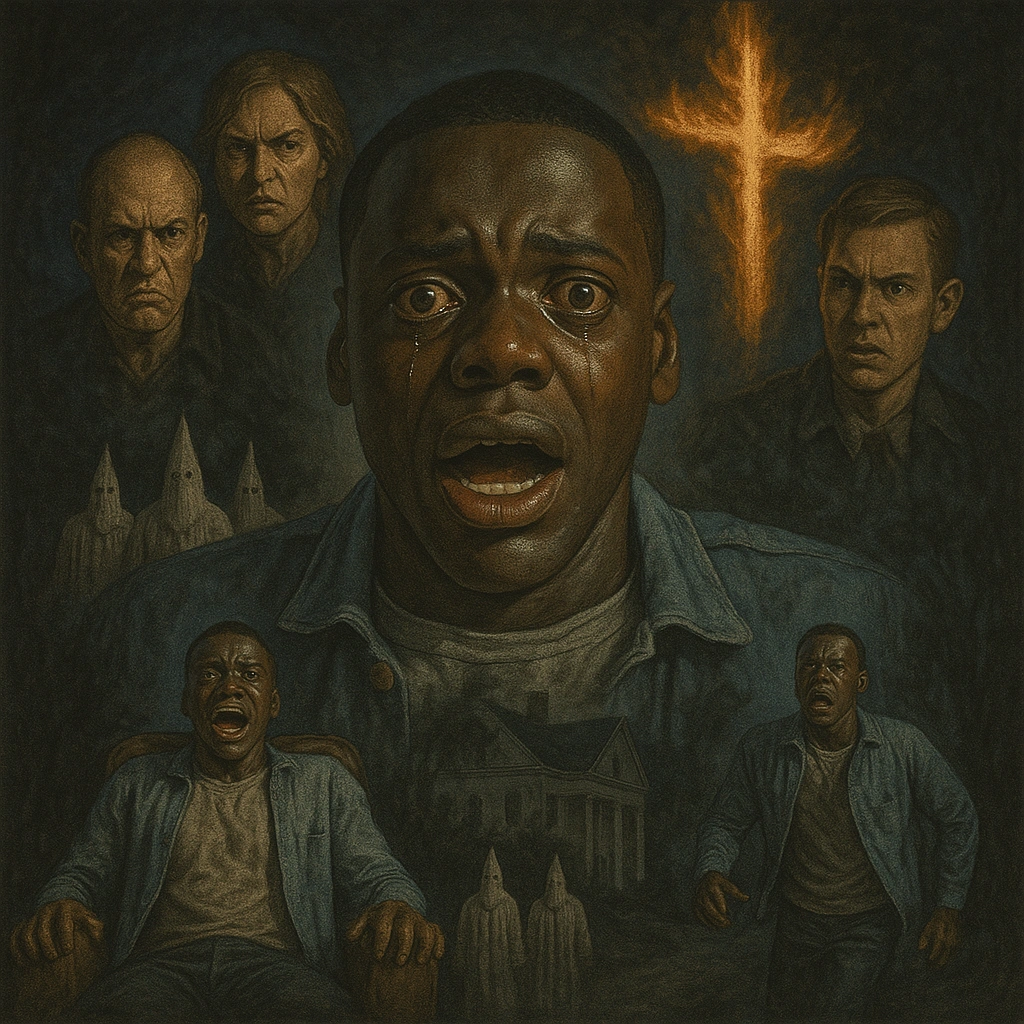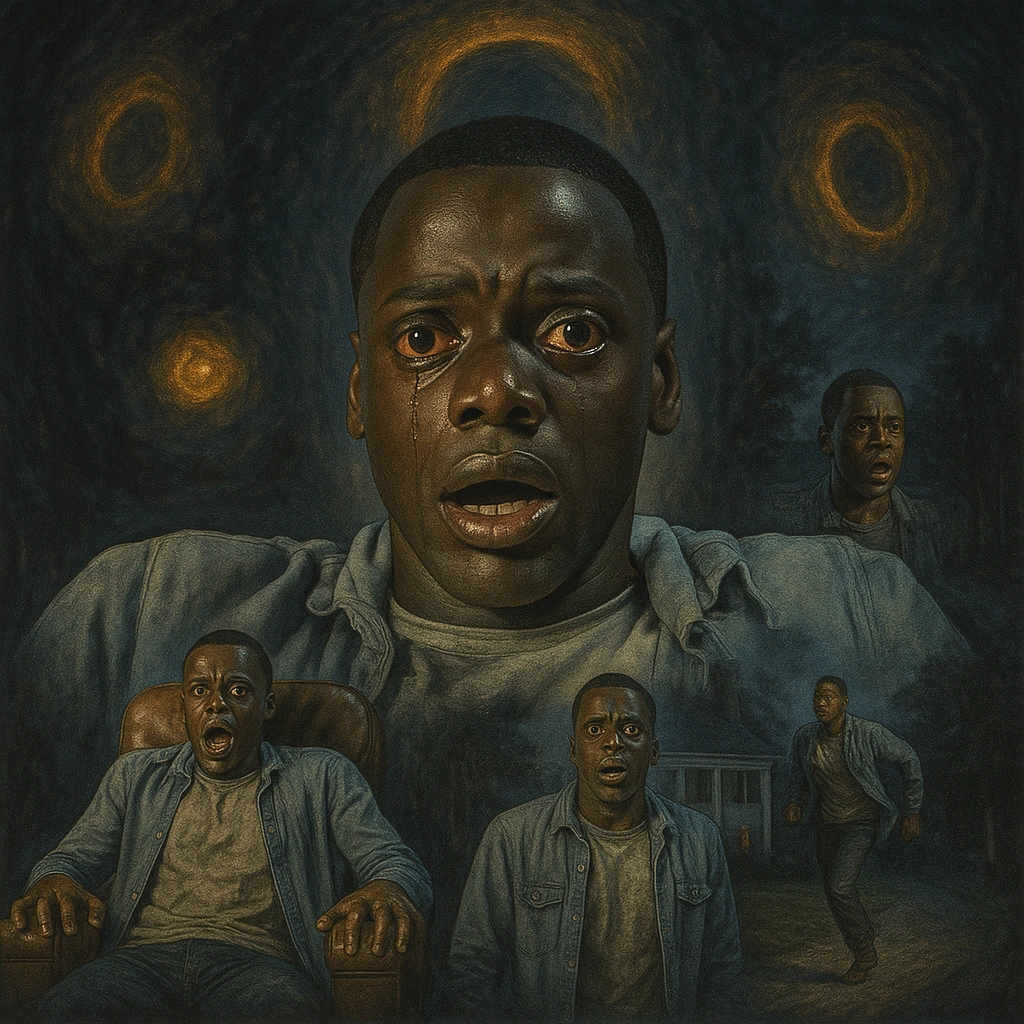Have you ever experienced a horror film that didn’t just scare you, but also made you profoundly uncomfortable by holding a mirror to societal truths? Jordan Peele’s ‘Get Out’ masterfully achieves this, transforming everyday racial anxieties into a chilling cinematic nightmare. This creates a powerful paradox: how can a horror movie be both terrifying and a piercing social critique? Indeed, it’s a common modern struggle to appreciate such nuanced artistry, yet perhaps overlook the deeper sociological questions this film explores.
This isn’t about mere jump scares; rather, it’s a practical roadmap to help you understand the enduring power of **Deconstructing Horror in ‘Get Out’**. Ultimately, we’ll demystify this phenomenon. We will show you that it is not just a thrilling ride; instead, it is a profound psychological and sociological critique. It offers practical wisdom and symbolic interpretations of racial anxieties that can expand your appreciation for genre-bending cinema and the universal quest for social justice.

Table of Contents
- What Defines Social Horror and ‘Get Out’s Place?
- The Anatomy of Fear: Race, Microaggressions, and the Sunken Place
- Chris Washington’s Journey: A Case Study in Racialized Terror
- Beyond the Scream: Engaging with Social Horror Critically
- Get Out’s Relevance in the Digital Age: Amplifying Social Commentary
- The Enduring Echo of Systemic Fear
- Call to Action
- Context and References
What Defines Social Horror and ‘Get Out’s Place?
Social horror is a subgenre of horror that uses terrifying scenarios to critique societal issues, systemic injustices, or cultural anxieties. Unlike traditional horror that might focus purely on supernatural threats or slasher villains, social horror weaponizes real-world fears and prejudices, making them the true monsters. ‘Get Out’ (2017), directed by Jordan Peele, stands as a seminal example of this genre. It masterfully blends psychological thriller elements with sharp social commentary on race in America. The film transforms the subtle, insidious nature of racism into overt, visceral terror. It forces audiences to confront uncomfortable truths about prejudice and privilege.
The origins of social horror can be traced back to films like ‘Rosemary’s Baby’ or ‘The Stepford Wives,’ which explored anxieties about control and conformity. However, ‘Get Out’ brought a fresh, incisive perspective by centering racial dynamics. Core components of ‘Get Out’s brilliance include its suspenseful narrative, its use of satire, and its groundbreaking exploration of microaggressions as a form of psychological torment. Philosophically, this dynamic interprets the hidden horrors within seemingly polite society, offering a guide—not a prophecy—on how art can expose uncomfortable truths. Fundamentally, this is knowledge, not magic, providing a framework for understanding the profound impact of systemic issues on individual lives.
The Anatomy of Fear: Race, Microaggressions, and the Sunken Place
Understanding the distinctive qualities that characterize **Horror in ‘Get Out’** is crucial for appreciating its unique power to disturb and provoke thought. It’s not about generic frights; instead, it highlights how the film weaponizes racial anxieties and societal hypocrisies to create a truly terrifying experience. Thus, analyzing these elements acts as a profound psychological and sociological tool for understanding fear on a deeper level.
Microaggressions as Psychological Horror
The film masterfully builds tension through a series of subtle, yet unsettling, microaggressions. These are the casual, often unintentional, expressions of prejudice that a person of a marginalized group experiences. For instance, the constant comments about Chris’s physique, the desire to touch his hair, or the awkward attempts to prove “not racist” all contribute to a pervasive sense of unease. This psychological torment, initially dismissed as mere awkwardness, slowly escalates into a chilling realization of deeper malice. This, in turn, allows for a more profound connection to the protagonist’s growing discomfort and paranoia, as his fears unfold naturally.
The Sunken Place: A Metaphor for Dispossession
The “Sunken Place” is arguably the film’s most iconic and terrifying metaphor. It represents a state of mental paralysis and dispossession, where the Black protagonist’s consciousness is trapped while their body is controlled by another. This powerfully symbolizes the historical and ongoing suppression of Black voices and autonomy within a predominantly white society. It offers symbolic interpretations of emotional journeys and narrative arcs. The inability to scream or react, despite full awareness, embodies the profound frustration and powerlessness experienced by marginalized communities.
The “Woke” White Liberal Facade
‘Get Out’ critiques not just overt racism, but also the more insidious forms found within supposedly “woke” or progressive white communities. The Armitage family, outwardly liberal and welcoming, harbors a sinister secret. Their superficial acceptance masks a predatory desire to exploit Black bodies. This creative prowess demonstrates that vision transcends simple villainy, providing a powerful framework for understanding social critique through character. It highlights the paradox of performative allyship versus genuine equity, making the film’s horror deeply unsettling for many viewers.
Chris Washington’s Journey: A Case Study in Racialized Terror
To truly appreciate the artistry and impact of **Deconstructing Horror in ‘Get Out’**, let’s delve into the protagonist’s experience. Chris Washington’s journey serves as a powerful case study, showcasing how racialized terror can manifest in seemingly benign environments. His story presents a unique approach to fear, offering moments of profound realization about systemic prejudice and the fight for self-preservation.

The Initial Unease
- Meaning/Interpretation: Chris’s visit to his white girlfriend Rose’s family estate begins with polite, yet subtly unsettling, interactions. The overly enthusiastic parents, the strange behavior of the Black staff, and the uncomfortable racial comments create an immediate sense of dread. This initial unease is crucial for establishing the film’s unique brand of horror.
- Dualities/Paradoxes: The film expertly blends the awkwardness of meeting in-laws with a growing sense of sinister undertones. This leads to an ‘Aha!’ moment about the insidious nature of microaggressions and the feeling of being an “outsider” in a seemingly welcoming environment.
The Unveiling of the Conspiracy
- Meaning/Interpretation: As Chris delves deeper, he uncovers the horrifying truth: the Armitage family lures Black individuals to their estate to transplant white brains into their bodies, effectively enslaving them. This revelation transforms the subtle racial anxieties into a literal, terrifying plot of exploitation.
- Dualities/Paradoxes: The narrative highlights the paradox of a family claiming to be liberal while engaging in the ultimate act of racial appropriation. This leads to a profound realization about the depths of systemic racism and the commodification of Black bodies.
The Fight for Autonomy
- Meaning/Interpretation: Chris’s struggle to escape the Armitage estate becomes a desperate fight for his own mind and body. His eventual triumph, though hard-won, symbolizes the reclaiming of agency and the breaking free from oppressive systems.
- Dualities/Paradoxes: The film explores the paradox of fighting for individual freedom against a deeply entrenched, almost invisible, societal evil. This leads to a powerful ‘Aha!’ moment about resilience, self-preservation, and the importance of fighting for one’s identity in the face of dehumanization.
Beyond the Scream: Engaging with Social Horror Critically
Understanding the layers of **Horror in ‘Get Out’** isn’t enough; real insight requires concrete engagement and critical analysis. These actions, therefore, are empowering self-practices, not mystical rituals to control external forces.
Recognize Subtext and Symbolism
When watching ‘Get Out’ or other social horror films, consciously look beyond the surface-level scares. Pay attention to metaphors, recurring symbols (like the teacup, the deer, or the garden party in ‘Get Out’), and subtle dialogue cues. These elements often carry the film’s deepest social commentary. This direct engagement is crucial for appreciating the layers of meaning and understanding the story more deeply.
Discuss and Reflect on Societal Themes
Engage in conversations about the film’s themes with friends, family, or online communities. Discuss how the horror elements reflect real-world issues like racism, classism, or systemic oppression. Reflect on your own biases and assumptions. This collaborative exploration enhances critical thinking and broadens your appreciation for nuanced portrayals.
Support Diverse Voices in Filmmaking
Seek out and support films by directors from underrepresented backgrounds. Films like ‘Get Out’ demonstrate the power of diverse perspectives to tell unique and impactful stories. Your viewership and advocacy, however small, contribute to a more inclusive and equitable future for filmmaking, ensuring that more voices can bring their unique horrors and critiques to the screen.
Get Out’s Relevance in the Digital Age: Amplifying Social Commentary
The timeless relevance of **Horror in ‘Get Out’** in the digital age is undeniable. This film transports us into a narrative that, while fictional, resonates profoundly with universal challenges faced today. These include navigating subtle forms of discrimination, dealing with performative allyship, and understanding the ongoing struggle for racial justice. Furthermore, in an era saturated with online discourse and social media activism, ‘Get Out’ provides a powerful cinematic language for discussing complex societal issues. Its enduring popularity highlights society’s fascination with profound stories that challenge norms and provoke uncomfortable conversations.
By engaging with this film, you gain tangible benefits. These include an enhanced capacity for critical thinking, a nuanced understanding of systemic racism, and practical wisdom for recognizing and addressing subtle forms of prejudice. In essence, it’s not just entertainment; it’s a profound cultural tool that fosters empathy, critical observation, and a broader understanding of the human condition, reflecting the ongoing evolution of media and society.
The Enduring Echo of Systemic Fear
As you journey through the unsettling world of **Horror in ‘Get Out’**, remember that this film is more than just a scary movie. Instead, it’s an invitation to explore the intricate tapestry of fear, race, and societal critique. Through its masterful blend of suspense and satire, ‘Get Out’ serves as your guide. It demystifies the insidious nature of systemic racism and empowers you to critically examine the world around you. Ultimately, the wisdom contained within this terrifying universe is not a prophecy, but a profound reflection of our collective anxieties, societal truths, and the timeless power of storytelling to expose the unseen horrors that lurk beneath the surface, echoing the enduring call for justice and understanding.
Call to Action
Ready to explore more films that blend horror with social commentary?
DISCOVER MORE SOCIAL HORROR FILMS HERE
EXPLORE JORDAN PEELE’S FILMOGRAPHY
Context and References
Internal Links to Related Articles:
- Read more about the universal principles of cinematic storytelling here.
External References (If Applicable):
- Wikipedia: Get Out (film)
- Jordan Peele’s Production Company, Monkeypaw Productions
- IMDb: The Internet Movie Database
- Racial Microaggressions
Disclaimer: This content is provided for educational and cultural understanding. Fictional narratives and film analyses are part of a rich tradition, offering guidance for appreciation and critical thinking, not deterministic prophecies or absolute judgments.
